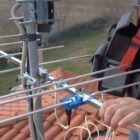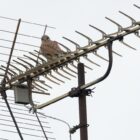When the NBN was revealed by the Australian government it was an ambitious but potentially huge thing for Australians. Australia has very poor internet and Wifi compared to other western countries and this network was meant to bring the country not just in line with other countries but hopefully put it ahead. But costs, the large and rural nature of the country, and more all came together to make it into a very mixed package. In some parts, people in cities mainly, it closely does what it was meant to. But in parts of Australia, it is very bad.
The intention
With much of the country facing bad internet speeds, in 2009 the government announced a network they intended to build over the next 8 years that would bring fast internet up to 100 Mbps to 90% of Australia, businesses, homes, schools and so on. The intent was to create a fibre-optic network Australia could be proud of. Twelve years on that has still not happened with the hope that at least 90% of the country to get up to 50Mbps the next promise that has failed also. The problem was the Labor government came up with the plan and the costs to fulfill it, a conservative coalition government then came into place and refused to spend that much and changed it.
The intention was an FTTP network meaning fibre to the premise so the fibre optic cables would be laid to every property in the country. With the new government wanting to cut costs that became an FTTN plan, meaning fibre to the node and that means relying on copper cabling already laid and that vastly slows down the internet speeds.

Costs still soared
Of course, that backfired and costs went way higher than planned anyway. So now it is not FTTP and it is slower than it was meant to be and it still cost over budget. In theory, it was meant to cost less by not having to run fibre to every property, just to a node. But it still became expensive. Plus the problem with relying on that copper cabling is that it is old and needs replacing. Some of it is not suitable for this job and each time NBN Co has to replace it, this causes delays and more costs. The amount of copper cabling bought so far is enough to go almost halfway round the world. Plus there are the costs of using the copper that Telstra owns.
Still bad connections around the country
Even with these extra costs the NBN is not what it should have been and the use of the outdated copper cabling has meant slower speeds, rural settings not having the kind of connection promised and WiFi still being a lot better in the main cities. To get those original connection speeds still needs replacing the copper cables with fibre-optics and even with the bad internet speeds still happening that would take another huge sum. FTTP is the answer.





